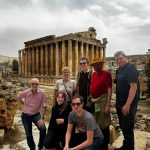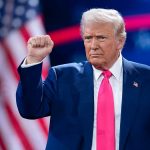Like many intrepid travellers, I am partial to a museum or two, especially those with a quirky or frankly bizarre focus.
From the surreal Royal Automobile Museum in Jordan to the Siem Reap Landmine Museum in Cambodia — not to mention Reykjavik’s famous Penis Museum — we have written plenty of articles about places that offer much more than a way to pass a rainy afternoon.
So, having found out that there was an Islam Karimov Museum designated solely to the life of the former Uzbek President – and a morning in Tashkent to kill – I knew exactly where we would be heading.
This is what it’s like to tour a building that honours the cult of personality of an increasingly bygone era.
Table of Contents
Why should I give a damn about this?
For those who don’t know, Islam Karimov was the first President of Uzbekistan, and he controlled this Central Asian republic from 1991 until dying in 2016.
We already have an article on him, which we recommend checking out here before continuing with this piece.
However, the most bizarre consequence of his contested legacy is likely the creation of this vast complex for those who visit Tashkent.
Most of my now eight trips to Uzbekistan have involved the Silk Road cities of Samarkand and Bukhara, as well as the cultural melting pot of the Ferghana Valley. In contrast to these places, the Islam Karimov Museum came as a total cultural shock.
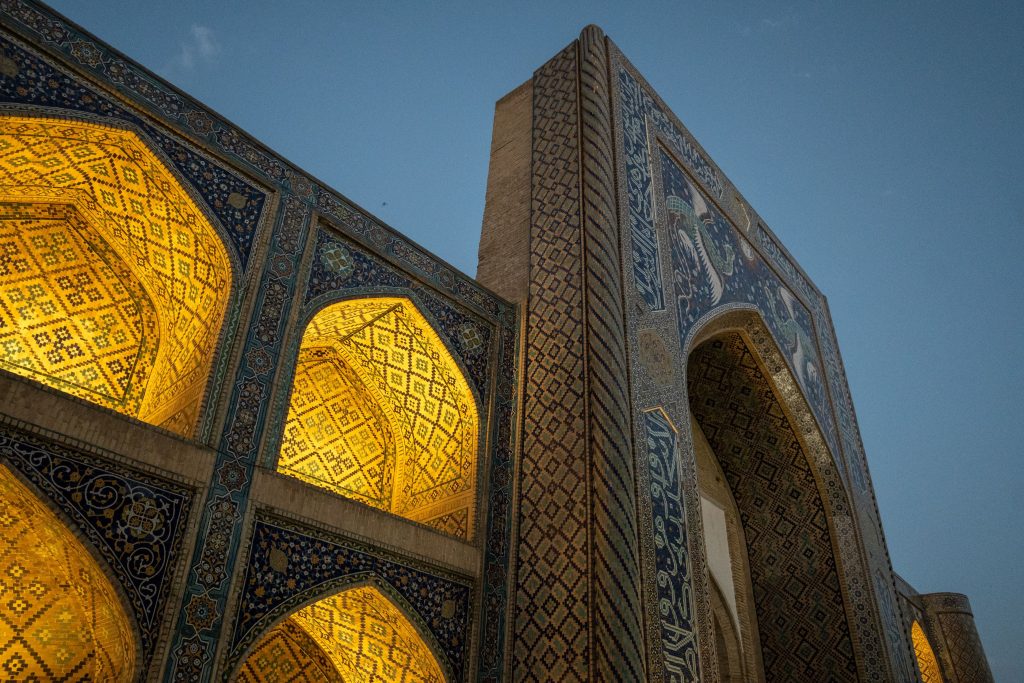
The “Scientific and Enlightenment Complex Named After the First President of Uzbekistan Islam Karimov,” to use its full name, can be found in a newly-built exhibition hall at the back of his former residence. This is itself creatively named the White House.
The museum still says a lot about Uzbekistan, the most populous and arguably most important state in Central Asia, today. It is telling that there is a concerted effort to move away from the policies of the Karimov era, yet not seemingly erase his personal legacy.
This particular trip to Tashkent came after a recent visit I made to the Kazakh capital, Astana. After his effective removal from power following deadly protests in 2022, the personal legacy of President Nursultan Nazarbayev is being quickly removed.
The museum honouring the former president – who remains very much alive – had been closed indefinitely. Kazakhstan’s capital is now called Astana again, having spent three years as “Nur-Sultan.”
In this sense, Uzbekistan has still yet to move on from Karimov.
The Islam Karimov Museum – wish you were here?
Technically, we made two visits to the complex, with the second being much more successful than the first. On both occasions, I was with my friend Julia, with many of these details summarized from her thorough (and frankly hilarious) notes.
The details on the museum’s website were confusing, so we headed down to the “White House” in the late afternoon to try our luck. The complex was open, and a friendly guard sporting a Kalashnikov waved us in.
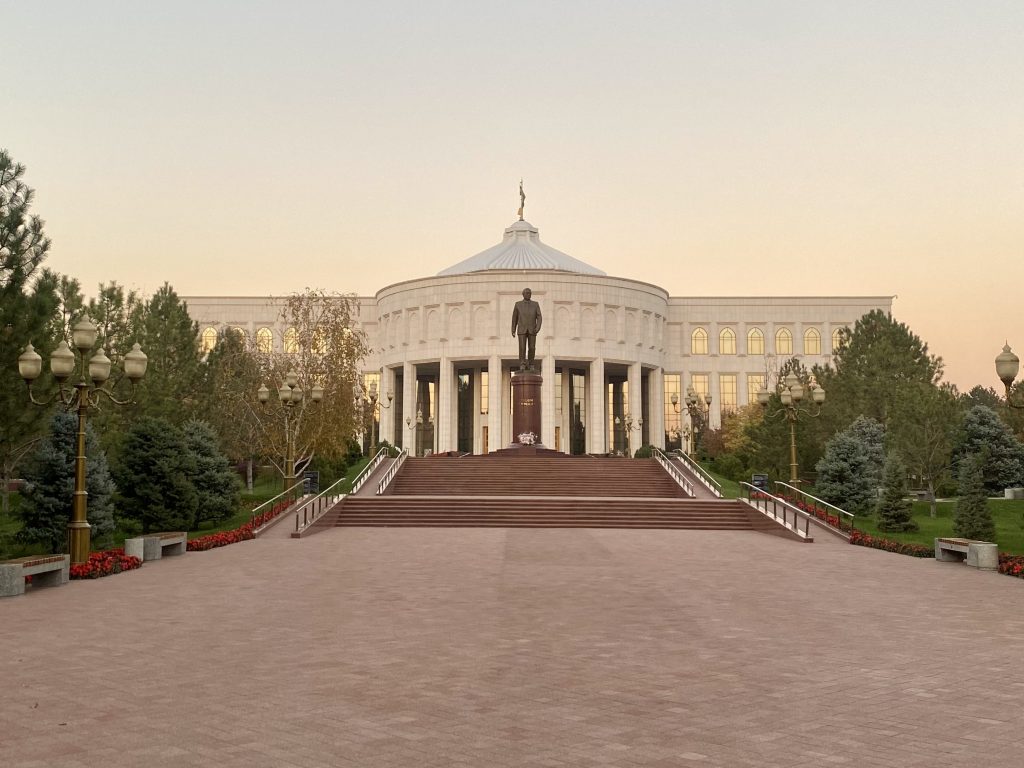
We then wandered around for 10 minutes looking like a pair of clueless foreign exchange students (spoiler – we were) until another less friendly man in police uniform told us in no uncertain terms to get out. So we did.
Thankfully, though, these things have a habit of working out. The next week, we had an 8-hour layover in Tashkent heading back, so we decided to try our luck again. Having headed down to the site around mid-morning, we managed to wrangle our way in.
In the interest of transparency, I say this having been to the likes of North Korea, Turkmenistan, and other countries with strong cults of personality. The Islam Karimov Museum was… quite something!
For starters, it was entirely empty when we went. The staff outnumbered us four-to-one and, judging by the entries in the visitor’s book, we didn’t come on a particularly quiet day.
The former residence itself is closed (“under renovation,” whatever that means), so the museum itself is housed in a purpose-built exhibition hall behind the White House. It’s spotless – clean to an almost sterile level.
Once you enter, it’s split into two. The first half is a photo gallery of Karimov, showing him with his family, world leaders, and various dignitaries around the world.


Now, to be fair to Mr. Karimov, he can certainly pose for a photo. I feel that he would be very disappointed looking through my family photo album, only to see the various pics of me awkwardly smirking, with my eyes closed, or generally modelling a resting bitch face.
While it was very difficult to come up with a shortlist of my favourite Karimov photos at the museum, I’ve narrowed it down to two.
There is the one of him awkwardly standing in a wheat field, looking quite the farmer as he poses in a full business suit.
And while we’re on this topic – there must be something that world leaders like about being in wheat fields. I’ve seen photos of it in North Korea, Tajikistan, and Kazakhstan, not to mention British Prime Minister Theresa May’s infamous gaffe when she said that running through wheat fields was the “naughtiest thing she’d ever done.”

But for the sheer chutzpah of whoever put these two photos together, my ultimate favourite must be the panel with Putin on the top and then Clinton on the bottom.
The culprit responsible for this has either a great sense of humour, or else would benefit from a lesson in international relations to understand the obvious connotations of this.
Honourable mentions go to the pics of him playing tennis Donald Trump style, posing with a very awkward Prince Charles, and feeling the muscle of (I assume) an Uzbek wrestler, circa a London gay club 15 years ago.
And then there’s the paintings…
Once you’ve finished this trip down memory lane, you’ll be politely guided through to the second half of the building, to view the art collection of paintings depicting Islam Karimov.
According to the Islam Karimov Museum’s website, the former president “never personally posed for artists or photographers,” which makes these pieces even more impressive. While I am the furthest thing from an art critic, they are genuinely well-done paintings, regardless of what you may think of the subject they are depicting.
Again, a few honourable mentions first. There was the painting of him posing not once but twice, in what appeared to be a surrealist interpretation of him negotiating at the UN for relief regarding the Aral Sea disaster.

The problem was that the mix of planets, birds falling from the sky, and the apocalyptic images of the dried-up seabed. This made it unclear whether he was trying to solve the disaster or if was responsible for orchestrating it.
There was also the one of him with the depiction of lions in the background, as they appear on the historic Sher-Dor Madrassah in Samarkand. An interesting choice, given the controversy surrounding the inclusion of animals in Islamic artwork, something usually prohibited by Muslims. Karimov, similarly, had a controversial relationship with Islam.
Yes, it is undeniable that some of these paintings were over the top, almost to the point of parody, to begin with. But somehow, the captions and descriptions of them managed to outdo whatever hyperbolic representation was in front of us.
“The picture ‘A Fight with a Tiger’ has an allegorical meaning. A tiger, as embodiment of power and strength, is not terrible for the courageous knight-hero… The First President of Uzbekistan Islam Karimov, the same as a tiger, engaged fearlessly and resolutely in a fight with the difficult problems, which seemed to be insurmountable.”
P. Annenkov, “A Fight with a Tiger,” 1998.
This tiger painting, other than for obvious reasons, was revealing for two further reasons.
Firstly, having just seen the pictures of Karimov posing as a benevolent man approaching the end of his middle years, it was quite the mental transformation to picture him as on par with a tiger.
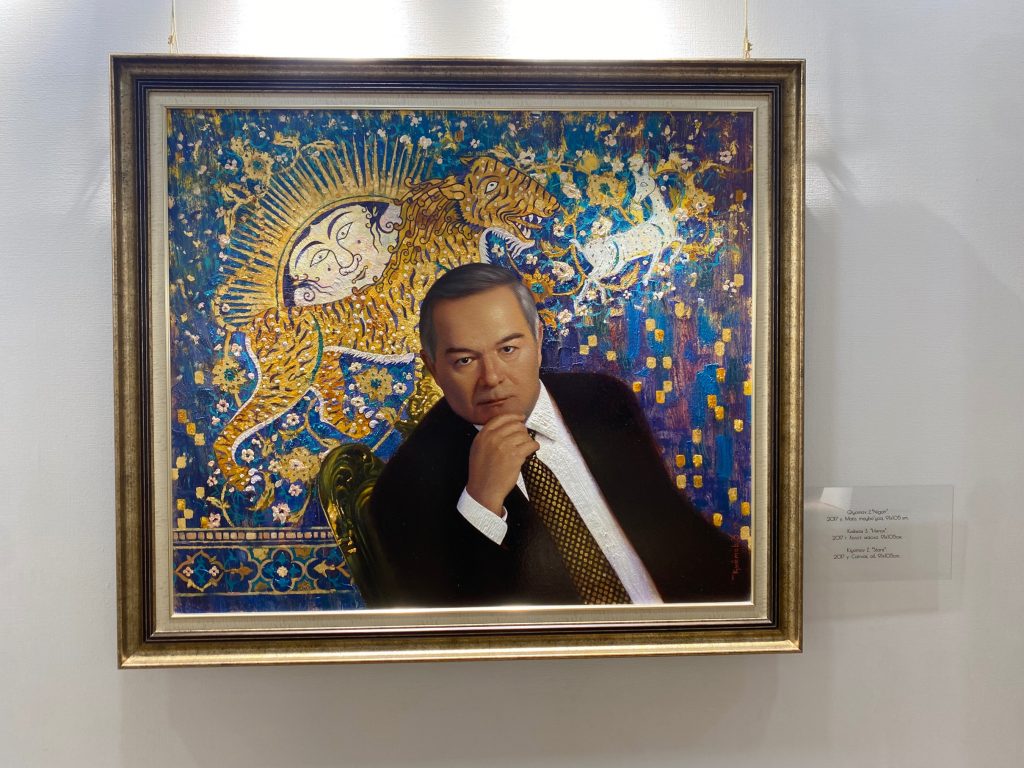
However, neither the painting nor its caption seems to fully explain what the “difficult problems” were that the tiger-president faced.
But maybe that was the whole point, given Karimov’s shifting alliances and the undeniable political shrewdness he exercised to remain in office for life. Were these “problems” the West? The Russians? Islamic Militants? Globalization?
Like all the best art, you should decide the meaning for yourself.
What about the museum gift shop?
Sadly, there was no museum gift shop, which probably came as a relief to my bank balance.
However, we didn’t leave empty-handed! We were given free desk calendars adorned with not one but two portraits of Karimov. It didn’t matter that they were for the current year, and that it was October by the time we visited – mine will sit proudly on my desk for years to come!
Overall, visiting the Islam Karimov Museum is a fascinating, if utterly bizarre, way to spend a few hours while you visit Tashkent. It’s right in the centre of town and less than a 200m walk from two metro stations, so it’s very easy to squeeze into your schedule too!
How can I make a visit happen?
We can arrange a city tour for you while you visit Tashkent, or else we can plan a bespoke private trip for you to the rest of Uzbekistan. We’re proud to consider ourselves the Central Asia experts and will, of course, include a trip to the Karimov Museum in your itinerary.
Check out our Uzbekistan landing page for everything from how to visit Tashkent, full Silk Road trips, or joining one of our famous Five Stans adventures!




